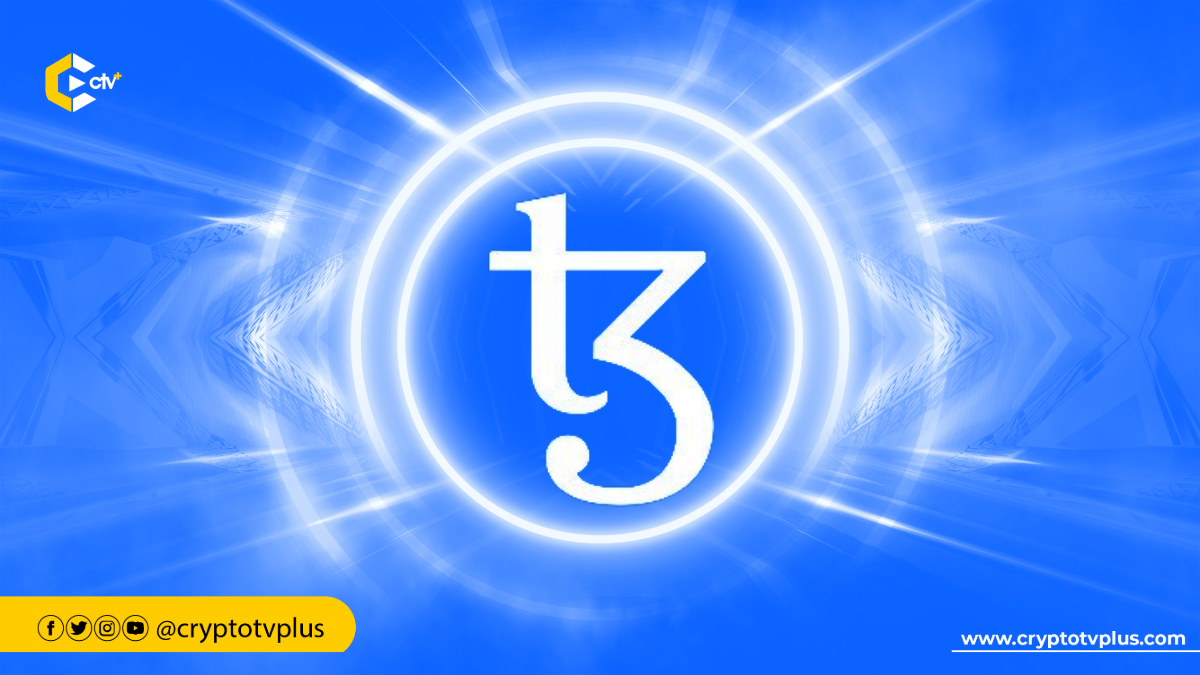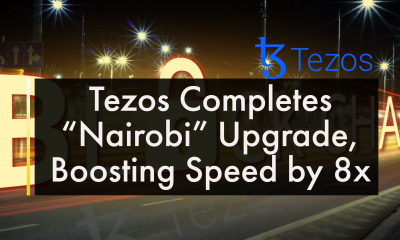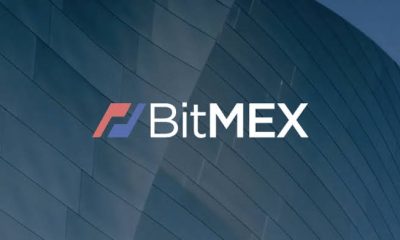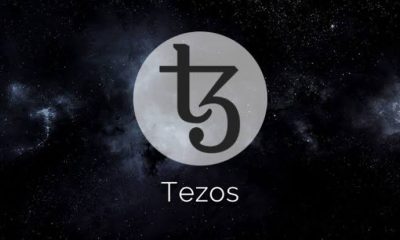News
97,000 unique addresses interacted with games on Tezos in Q1 2024

In the first quarter of 2024, decentralized games on Tezos grew significantly with the number of active addresses engaging in gaming on the Tezos blockchain increased by 557% compared to the previous quarter.
Approximately 97,000 unique addresses played games on the Tezos blockchain during this period. Messari observed that the significant increase in gaming activity was primarily driven by Coin Blast.
Coin Blast is a social gaming platform on the Tezos blockchain that allows users to engage in various arcade games and compete against friends in trivia and action-based challenges.
The game is designed with a multiplayer strategy, enabling real-time competition between players. Coin Blast also incorporates a social wagering element, where users can test their knowledge on various topics and have the chance to win real-money prizes.
It became the protocol with the most active addresses on Tezos, with over 7,000 unique addresses per week. Additionally, the number of contract calls to games on Tezos surged by 1,815% quarter-over-quarter, totaling 1.7 million interactions.
Other notable developments in the Tezos gaming sector included Triumph Games’ Battlerise, a turn-based RPG game that received funding from the Tezos Foundation in February.
TZ APAC, a Tezos development organization in the Asia Pacific region, partnered with Farquhar Venture Capital and Fibo Partners to fund games built on Tezos. X World Games, a gaming platform with over 1 million users, also partnered with TZ APAC.
Metapals, an AI-companion game, collaborated with Sanrio and the creators of the Teletubbies to offer NFT companions available for purchase in Q2 2024. Auto Hero, a Web2 game with over 5 million downloads, started integrating in-game items as NFTs on the Tezos blockchain. Several top-tier launchpads, including GameFi and OpenPad, integrated Tezos to support token launches for upcoming games like Battlerise.
NFT had a downside on Tezos
In early 2024, Tezos experienced a 28% decline in NFT sales quarter-over-quarter, amounting to $1.6 million. A report also noted a 63% drop in new addresses interacting with NFTs, reducing the number to 3,000. Despite these declines, the platform maintained a steady 35,000 unique active users, demonstrating strong user loyalty.
Tezos continued to thrive in the NFT ecosystem. fx(hash) launched “Spellbound,” an innovative voice-to-image generator for fashion, while Objkt introduced fee sharing, empowering community curators with personalized storefronts.
Other notable developments included the WAC Museums initiative exploring Web3 technology in cultural institutions, NYC’s Stellar art experience at NFT NYC, Glenfiddich’s partnership with Obvious for 300 NFT releases, and Manchester United’s ongoing NFT engagement.
DeFi and stablecoins
The Tezos DeFi sector saw a 28% quarterly increase in USD total value locked (TVL), surpassing $78 million. This surge was partially driven by the appreciating value of XTZ. Though most of the DeFi TVL in the crypto market resides on EVM-compatible networks, the introduction of Etherlink has allowed developers to implement EVM-compatible protocols on Tezos.
In case you missed it: A new report shows how Sushiswap led CORE’s 74% QoQ DeFi growth.
Etherlink is a protocol designed to facilitate interactions and transactions on the Ethereum blockchain. It aims to enhance connectivity between decentralized applications (dApps), smart contracts, and blockchain networks.
Youves had the largest TVL on Tezos with $36 million, Sirius with $23 million, and Kord.Fi with $10 million. Youves is a decentralized, self-governing, and non-custodial platform built on the Tezos blockchain that allows users to create and manage synthetic assets.
The platform enables users to become “minters,” where they can lock eligible collateral, such as Tezos (XTZ) or wrapped Bitcoin (tzBTC), to mint new synthetic assets like uUSD, uBTC, and uXTZ.
Sirius is a token built on the Tezos blockchain that allows users to automatically participate in Liquidity Baking, a decentralized liquidity pool between the native Tezos token (tez) and the wrapped Bitcoin token (tzBTC). Before Sirius, users had to conduct a multi-step transaction to deposit tez and tzBTC into the Liquidity Baking pool.
Kord.Fi is a decentralized finance (DeFi) protocol built on the Tezos blockchain that enables users to leverage trade between Tezos (XTZ) and Bitcoin (tzBTC) on-chain.
It is designed to provide liquidity providers with additional leverage, allowing them to earn higher investment yields. The protocol achieves this by matching borrowers with liquidity-baking lenders through smart contracts embedded in the Tezos blockchain.
According to Messari, by the end of Q1 2024, over $39 million in USDT had been issued on Tezos. The largest stablecoins exclusively issued on Tezos were Kolibri’s kUSD, with over $1 million issued, and USDTez’s USDtz, with over $250,000 issued.

























Pingback: SEC Issues Advisory Vs Illegal Crypto Mining Platform | Key Points | June 19, 2024 | BitPinas - Plato Data Intelligence
Pingback: 97,000 unique addresses interacted with games on Tezos in Q1 2024 - Crypto Market News
Pingback: The Ultimate Crypto Decision: XTZ vs. Toncoin vs. WW3 Shiba – Choo…